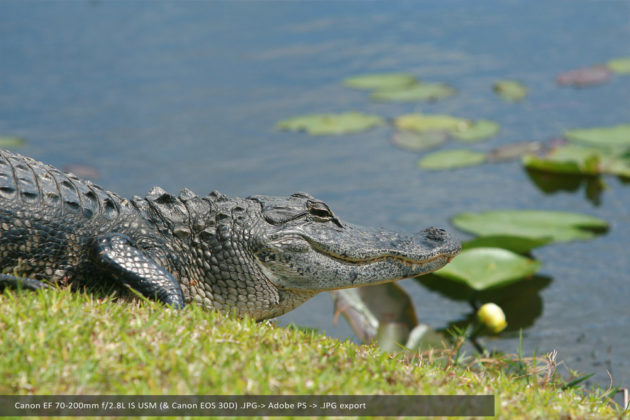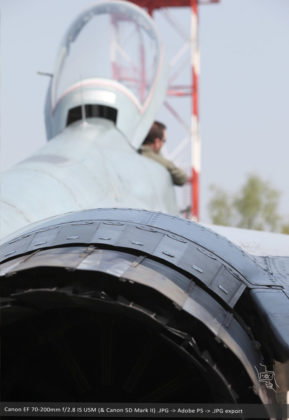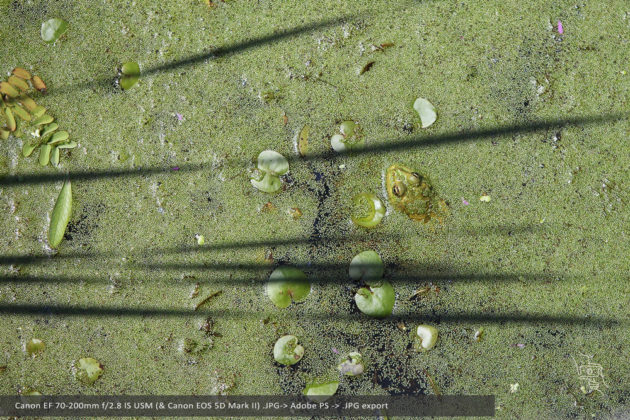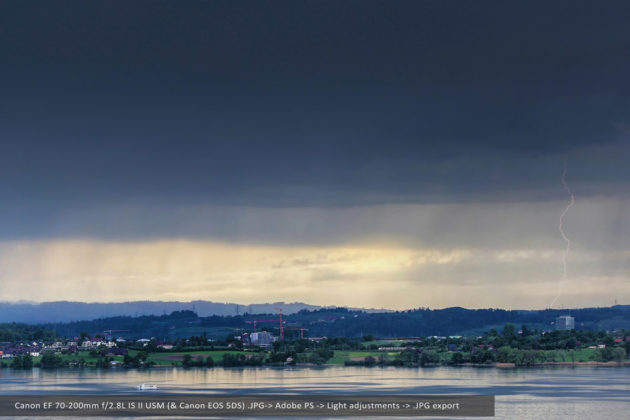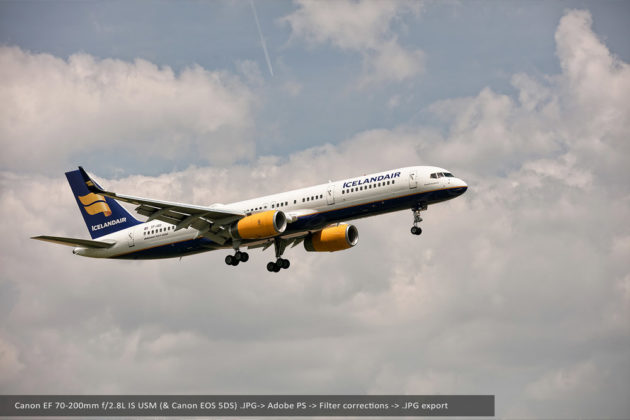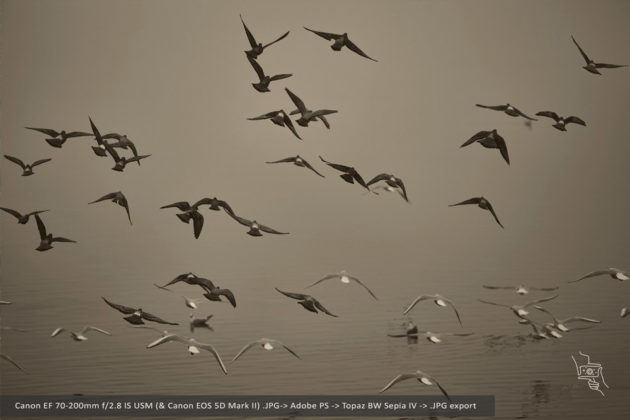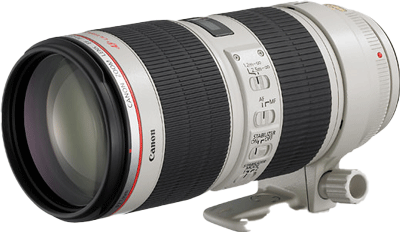Lens overview
Announced in March 2010, the EF 70–200 mm f/2.8L IS II USM reset expectations for the class: 23 elements in 19 groups (with one fluorite + 5 UD elements), 4‑stop Image Stabilizer, closer 1.2 m minimum focus, and the same 77 mm filter thread pros love. It keeps the familiar constant length 70–200 handling (internal zoom + internal focus), dresses it in robust L‑series weather‑resistant construction, and adds a confidently fast ring‑type USM drive. Canon listed the original price at ¥300,000; typical specs include 88.8 × 199 mm and ~1,490 g. Canon Global
Positioning & variants. This is the successor to the EF 70–200 mm f/2.8L IS USM (Mark I, 2001) and the predecessor to the IS III (2018), which largely refreshed coatings while retaining the same optical formula. If you’re comparing across the family, the IS II is the big generational jump in sharpness, stabilization, and mechanics; the IS III is a refinement.
Pricing now. On the used market, clean copies of the IS II commonly list around US $950–1,550 depending on condition/completeness (hood/case/collar).
Build and ergonomics
The IS II feels like a tool, not a trophy. The barrel doesn’t extend, the front doesn’t rotate, and everything—from the zoom ring’s short 60° throw to the focus limiter (2.5 m–∞)—is tuned for work. The package typically includes the ET‑87 hood, Tripod Mount Ring B (W), and LZ1326 soft case: weather-proofed gaskets and a rigid chassis round it out. On long days, the tripod collar isn’t optional: it’s a wrist saver.
Optical performance
In a word: dependable. Wide‑open at f/2.8, the IS II is already crisp in the center and very strong across the frame; stepping to f/4–5.6 tightens micro‑contrast and evens the corners. The fluorite + five UD elements meaningfully reduce secondary spectrum, so contrast holds in complex light, and LoCA is modest for the class. Several independent tests at launch found lower CA, vignetting and better wide‑open resolution versus the Mark I. Flare is well‑controlled for a fast tele‑zoom (use the ET‑87 outdoors). Distortion stays low—a breath of barrel at 70 mm, mild pincushion by 200 mm.
Bokeh & rendering. Telephoto compression and the 8‑blade circular diaphragm give pleasing compression and specular highlights, especially from 135–200 mm at closer distances. It’s not a “dreamy” prime, but it’s clean, neutral, and consistent—the look clients expect.
AF & IS. Ring‑USM is fast, quiet, and decisive; the 4‑stop IS is real‑world helpful for events and low light, and Mode 2 panning is a staple for field sports.
Digital adaptation (EF → mirrorless) — IBIS & focus‑guide on the R5
- Mounting. On EOS R bodies, use any Canon‑compatible EF‑EOS R adapter; all AF, IS, EXIF and aperture functions pass through transparently.
- IBIS behavior. On IBIS‑equipped R bodies (R5/R6/R3/R7, etc.), IBIS works with EF lenses. With IS‑equipped EF lenses like this one, the lens IS handles pitch/yaw, while IBIS adds roll and X/Y—giving five‑axis correction overall. (Canon also notes the camera’s IBIS menu is hidden when an IS lens is attached; the lens’s IS switch governs the combined system.) Canon Academy
- Proof point. Canon’s own materials and Academy guide confirm IBIS benefits apply with EF lenses (adapter), and that IBIS + lens IS can cooperate—exact division of labor depends on lens type/focal length.
- Focus‑guide. For manual‑focus touches, the R5 “Focus Guide” overlay (green/white arrows) works with adapted EF glass: enable it in AF → Focus guide when the lens is in MF, and you’ll see directional cues plus MF peaking if you like.
You mentioned you’ve run Mark I & II on 5DS and R5—that matches what we see: the IS II easily feeds high‑resolution sensors and feels native on R bodies via adapter.
Teleconverters & AF. The IS II is rated for Extender EF 1.4×/2×. On R‑series, AF still works at small effective apertures (the R5 can AF down to f/22), which makes 1.4×/2× far more practical than on older DSLRs.
Historical and collector context
The IS II was the step‑change 70–200 in the EF era—new glass mix, better IS, closer MFD, sturdier mechanics. The IS III (2018) added ASC coatings and cosmetic tweaks; the resulting differences in image quality are minor. If you’re coming from Mark I, Mark II is the upgrade. If you’re comparing to RF 70–200 f/2.8 variants, the EF II remains a price‑efficient workhorse with internal zoom that many still prefer.
Impressions
Set f/2.8 without fear at 70–135 mm; at 200 mm you’ll wring out just a touch more consistency at f/3.2–4. For field sports, engage the focus limiter (2.5 m–∞) and IS Mode 2 for smooth pans. On the R5, assign IBIS + IS as‑is (lens switch on), and keep Focus Guide handy for critical MF tweaks around eyelashes or reflective jerseys. For long sidelines, 1.4× is the “free” reach; 2× trades some acuity but is much more usable on mirrorless than it ever was on legacy DSLRs.
Tips & setups we like
Adapters: Canon’s EF‑EOS R works perfectly; reputable third‑party “smart” adapters are fine if you need a backup.
Events/portrait: 135–200 mm at f/2.8–3.5, IS Mode 1, hood on; use eye‑detect AF on the R5 and nudge Case A if tracking motion.
Motorsport/sidelines: IS Mode 2, shutter 1/160–1/320 s for motion blur, limiter 2.5 m–∞, monopod + collar.
Low light: trust the 4‑stop IS, but mind subject motion—raise ISO or shutter as needed.
Sample photos
Verdict — Pros & Cons
Pros
- Outstanding wide‑open performance for a fast tele‑zoom; improved CA/contrast vs Mark I.
- 4‑stop IS, ring‑USM AF, weather‑resistant build; constant length handling.
- Plays beautifully with IBIS on R‑series (EF adapter), plus Focus Guide for MF precision.
- Price‑efficient on the used market vs IS III or RF 70–200 f/2.8.
Cons
- Hefty (~1.49 kg)—tripod collar helps for long sets.
- IS III adds better coatings (flare handling) if you shoot a lot into the sun.
- With 2× extender, acuity drops; use thoughtfully.
Related reading on GuideBG:
- Our review of the lighter Canon EF 70–200 mm f/4L (great travel tele)
- Coming soon: Canon EF 100–400 mm f/4.5–5.6L IS II USM (reach without swapping)



